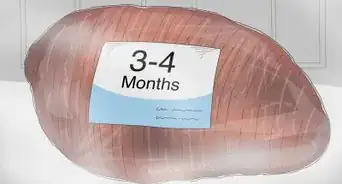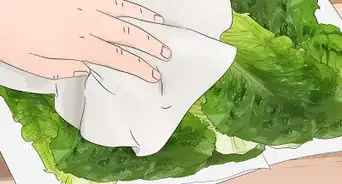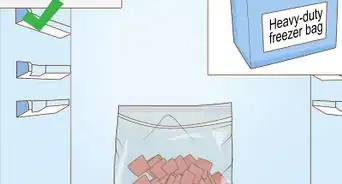This article was co-authored by Abyssinia Campbell and by wikiHow staff writer, Luke Smith, MFA. Abyssinia Campbell is an Executive Chef and the Owner of Chef Abyssinia, Personal Chef and Catering. With over ten years of experience, she specializes in catering, event planning, menu development, meal planning, and food business operations. When it comes to cooking, Chef Abyssinia enjoys using fruits, vegetables, healthy food alternatives, and local farm-fresh ingredients. She holds a BASc in Culinary Arts and Food Service Management from Johnson and Wales University.
There are 7 references cited in this article, which can be found at the bottom of the page.
wikiHow marks an article as reader-approved once it receives enough positive feedback. In this case, several readers have written to tell us that this article was helpful to them, earning it our reader-approved status.
This article has been viewed 1,713,003 times.
Your mouth is watering at the thought of frying up that bacon in the fridge, but you can’t quite remember how long it’s been there. Days? Weeks? Months? Eating spoiled bacon is a surefire way to spoil the rest of your day, but how do you know if bacon is still good? What are the signs? Before you reach for that package, check out our simple signs that your bacon might be bad, plus our tips on how to refrigerate, freeze, and dispose of bacon.
Things You Should Know
- Check the “sell by” or “use by” date on the bacon's packaging, and eat the bacon either before the “use by” date, or no longer than 7 days after the “sell by” date.
- Examine the bacon for green, gray, or brown discoloration, mold spots, or slimy texture, all of which indicate spoiled bacon.
- Smell your bacon and check for a sour or rotten smell–even just a hint of an unpleasant smell is a sign of bad bacon.
- Store your bacon in an airtight container for up to 7 days in the fridge, or up to 4 months in the freezer. Dispose of spoiled bacon in an airtight freezer bag.
Steps
Signs of Bad Bacon
-
1Check the expiry date on the bacon packet. Look for either a “sell by” or “use by” date, and compare the indicated with the current calendar date. Don’t eat any bacon that’s past its “use by” date. The “sell by” date is a little different: properly stored bacon can be eaten up to 7 days past its “sell by” date.[1]
- Note that properly frozen bacon can last far beyond its "sell by" or "use by" dates.
- Also check to make sure the packaging is still sealed and has no holes or tears, which may expose your bacon to bacteria and cause it to spoil prematurely.
-
2Check for a sour smell. Open up your bacon and give it a good whiff. Spoiled bacon will have a distinct, sour smell. If your bacon smells even a bit rotten or off, it’s best to toss it.[2] Unspoiled bacon has a mild, savory smell that you can’t miss.Advertisement
-
3Examine the bacon for discoloration or other imperfections. Bring the bacon to a well-lit area and remove it from its packaging. Fresh, uncooked bacon is light pink and white in color, while unspoiled precooked bacon has darker red veining. If your bacon matches these descriptions, it’s safe to eat.[3] However, if the bacon has green spots (mold), or is dull gray or even brown in color, then it's not suitable to eat.
-
4Touch the bacon and check for a slimy texture. Unspoiled bacon is fairly dry or rough in texture, though it may have some condensation or juices on its surface. Spoiled bacon, on the other hand, often has a distinct slimy, viscous feel. This is because lactic acid bacteria has begun to grow and break down the bacon, lending it that unpleasant, sticky texture.[4]
- Always handle raw meat with clean hands, and be sure to wash your hands afterward, as well.
How long does bacon last in the fridge?
-
1Store uncooked bacon in the fridge for up to 7 days. Place your opened bacon in an airtight container, like a sealable freezer bag or tupperware, and keep it in the fridge at 40 °F (4 °C) or below for up to a week after opening. [5]
- If the original packaging is still sealed, keep the bacon until 7 days after the indicated “sell-by” date, or until the “use-by” date.
-
2Keep cooked bacon fresh in the fridge for an additional 7 days. Extend your bacon’s shelf life by cooking it before its expiration date, and then storing it in the fridge in an airtight, resealable container. In addition, wrap the bacon strips in a paper towel to absorb any excess grease that may make your bacon soggy during its stay in the fridge.[6]
- Bacon will stay fresh for different amounts of time, depending on how it’s been prepared. Cooked bacon in strips lasts for about a week in the fridge, and up to 6 months in the freezer, while bacon bits will last for about 6 weeks in the fridge, and 6 months in the freezer.
How do you thaw frozen bacon?
-
1Thaw frozen bacon in the refrigerator, cold water, or in the microwave. Avoid defrosting bacon at room temperature. Instead, place frozen bacon in the fridge the night before use, or use the defrosting function on your microwave and enter the approximate weight. Alternatively, place your frozen bacon in a sealed container, and place the container in a cold water bath for a few hours.[8]
- Bacon is also perfectly safe to cook straight from the frozen state, if you don’t have time to thaw it.
-
2Dispose of bacon that’s been above 40 °F (4 °C) for more than 2 hours. Avoid leaving your bacon out on the counter too long. Bacon exposed to the environment at room temperature may harbor unsafe bacteria. Whenever possible, keep your bacon stored in a cool, airtight space.[9]
- When shopping, save selecting your bacon for last, and do so immediately before checking out to reduce the time the bacon spends between refrigeration.
How should you dispose of bacon?
-
1Place spoiled bacon in a freezer bag, and throw it away outside. You don’t want spoiled bacon sitting exposed in your kitchen garbage, rotting and stinking up the place. To properly dispose of spoiled bacon, place the bacon (along with its original packaging) in a freezer bag, and throw it away in an outdoor trash can, if possible. Otherwise, keep the bag in the freezer and throw it out on garbage pickup day.[10]
-
2Refrigerate or freeze bacon fat in a sterilized jar. When you cook bacon, avoid pouring the fat down the drain, where it can congeal and clog up your pipes. Instead, strain the leftover fat into a sterilized jar, let it solidify overnight, then keep the jar in the fridge for up to 3 months, or indefinitely in the freezer. Then, use your leftover bacon fat to add flavor to other dishes, like vegetable stir fries or as a tasty substitute for shortening.[11]
- If you don’t care to use your leftover bacon fat, let it cool for a couple hours, then pour it into a disposable plastic container, and throw the container out.
Warnings
- Eating spoiled bacon can result in food poisoning, nausea, fever, or other illness.⧼thumbs_response⧽
- Staphylococcus aureus is a common source of food poisoning because it isn't deterred by salty, cured meats, leading some people to a false sense of security thinking that the salt makes the food safe.⧼thumbs_response⧽
References
- ↑ https://www.fsis.usda.gov/food-safety/safe-food-handling-and-preparation/meat/bacon-and-food-safety
- ↑ https://www.kitchensanity.com/food/does-bacon-go-bad/
- ↑ https://www.fsis.usda.gov/food-safety/safe-food-handling-and-preparation/meat/bacon-and-food-safety
- ↑ https://homecookworld.com/why-is-my-bacon-slimy/
- ↑ https://www.fsis.usda.gov/food-safety/safe-food-handling-and-preparation/meat/bacon-and-food-safety
- ↑ https://leftoversthenbreakfast.com/how-to-store-cooked-bacon/
- ↑ https://www.fsis.usda.gov/food-safety/safe-food-handling-and-preparation/meat/bacon-and-food-safety
- ↑ https://www.fsis.usda.gov/food-safety/safe-food-handling-and-preparation/meat/bacon-and-food-safety
- ↑ https://www.foodsafety.gov/food-safety-charts/food-safety-during-power-outage
About This Article
If you’re not sure how to tell if bacon is bad, check the expiration date on the packet. You should not eat bacon that is past the “use by” date or is more than 7 days after the “sell by” date. If the date is good but you’re still not sure, smell the bacon to see if it still has a fresh smell. If it smells sour or off, it’s probably bad. Examine the bacon carefully, as well—if it has green dots, looks dull, or is turning gray-brown, you should throw it out. Keep reading for tips on how to shop for the best bacon!
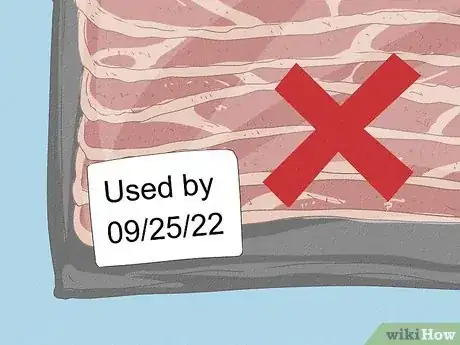
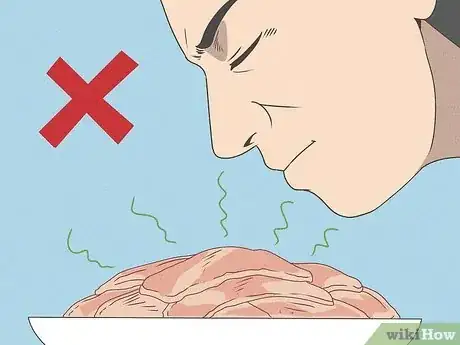
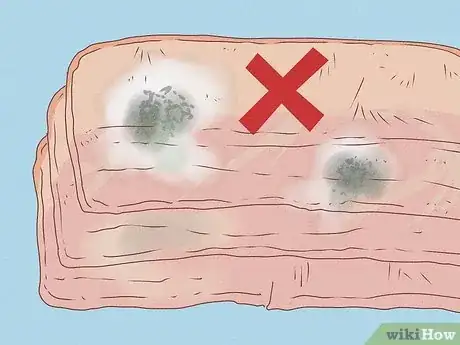
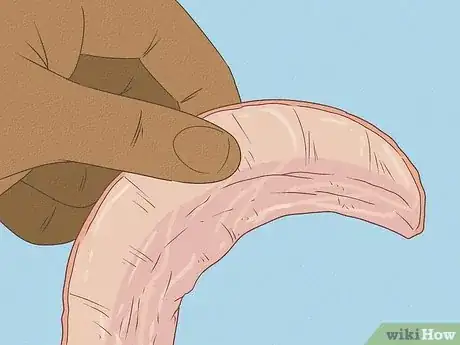

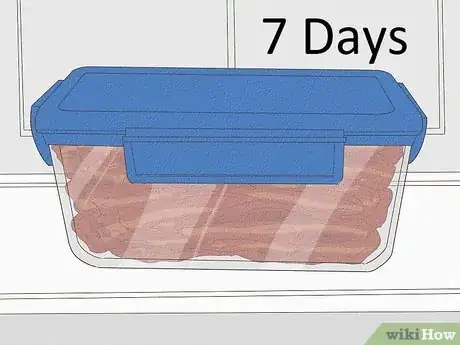
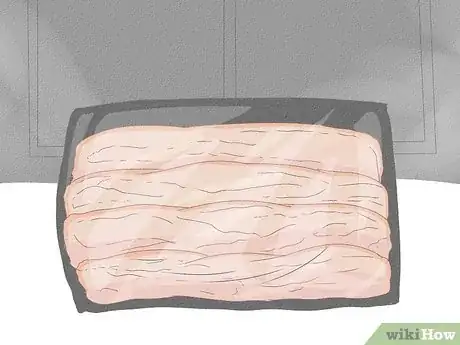
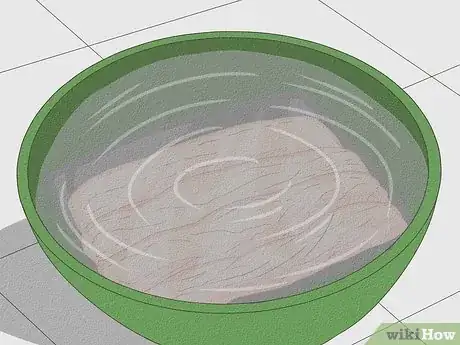


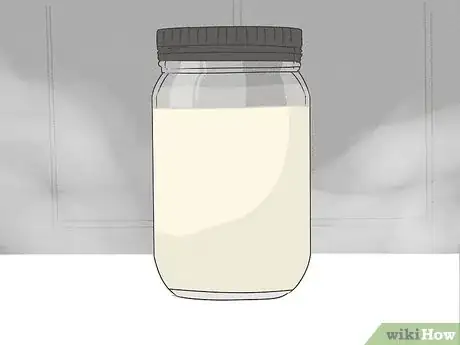



-Step-11.webp)
